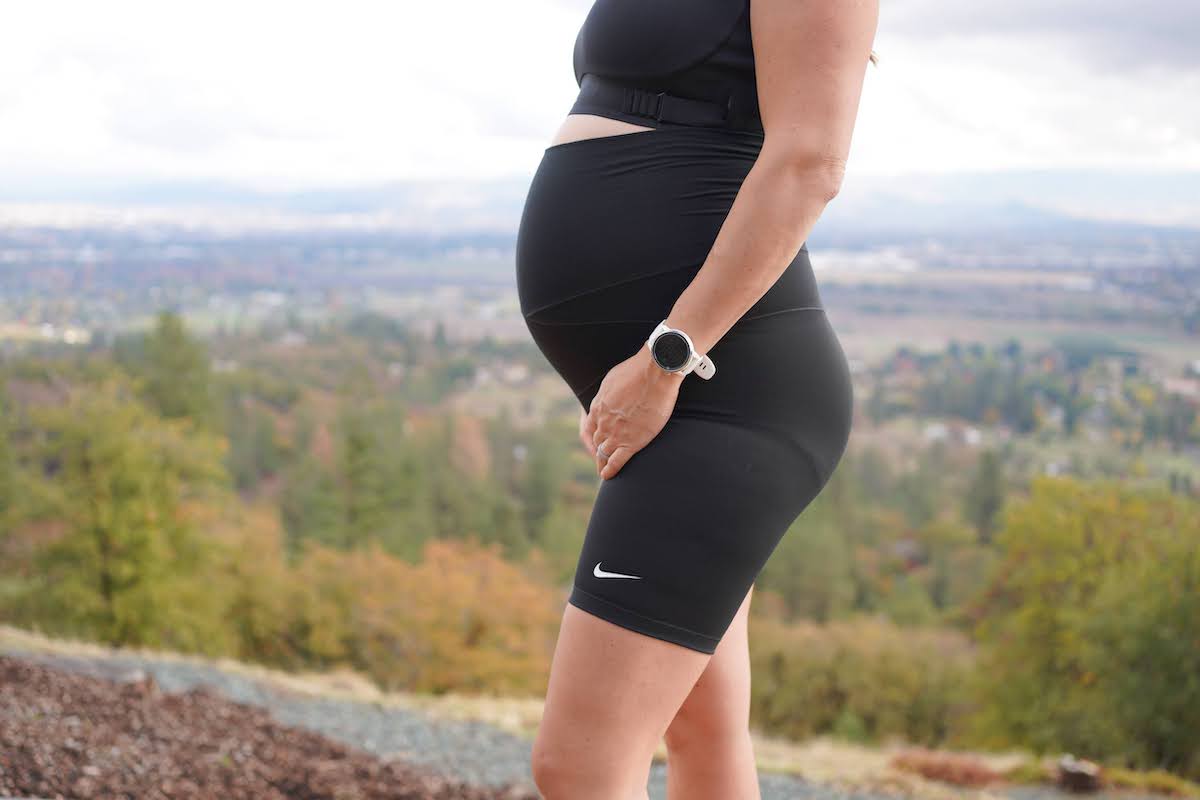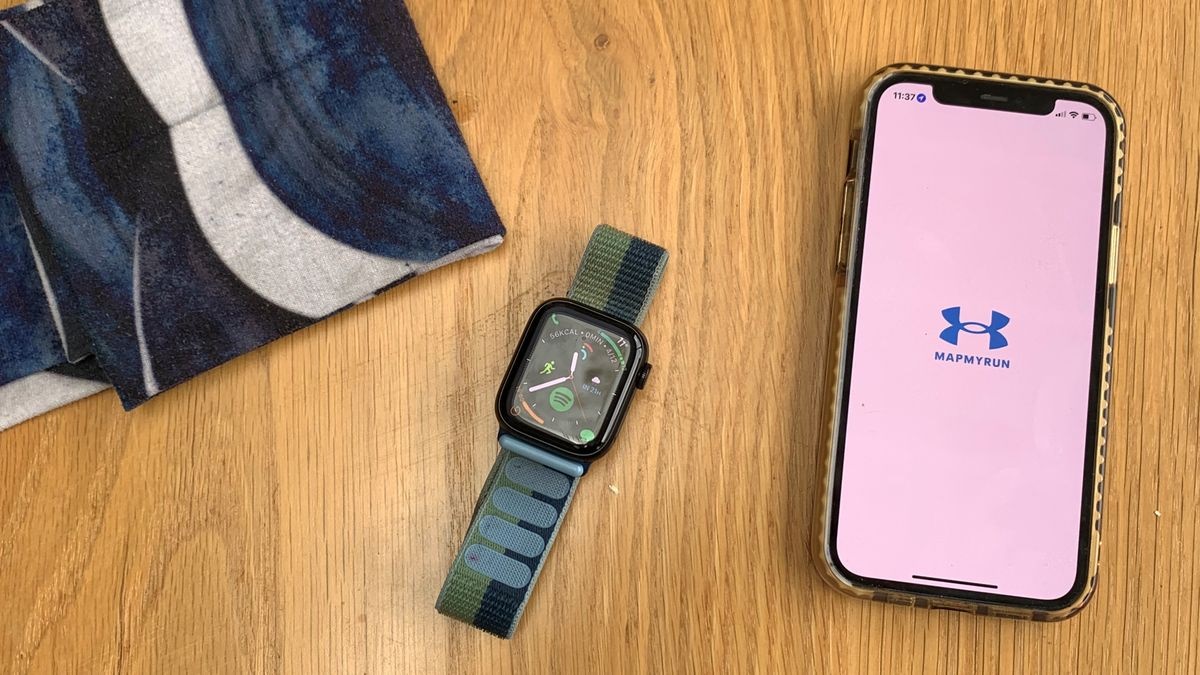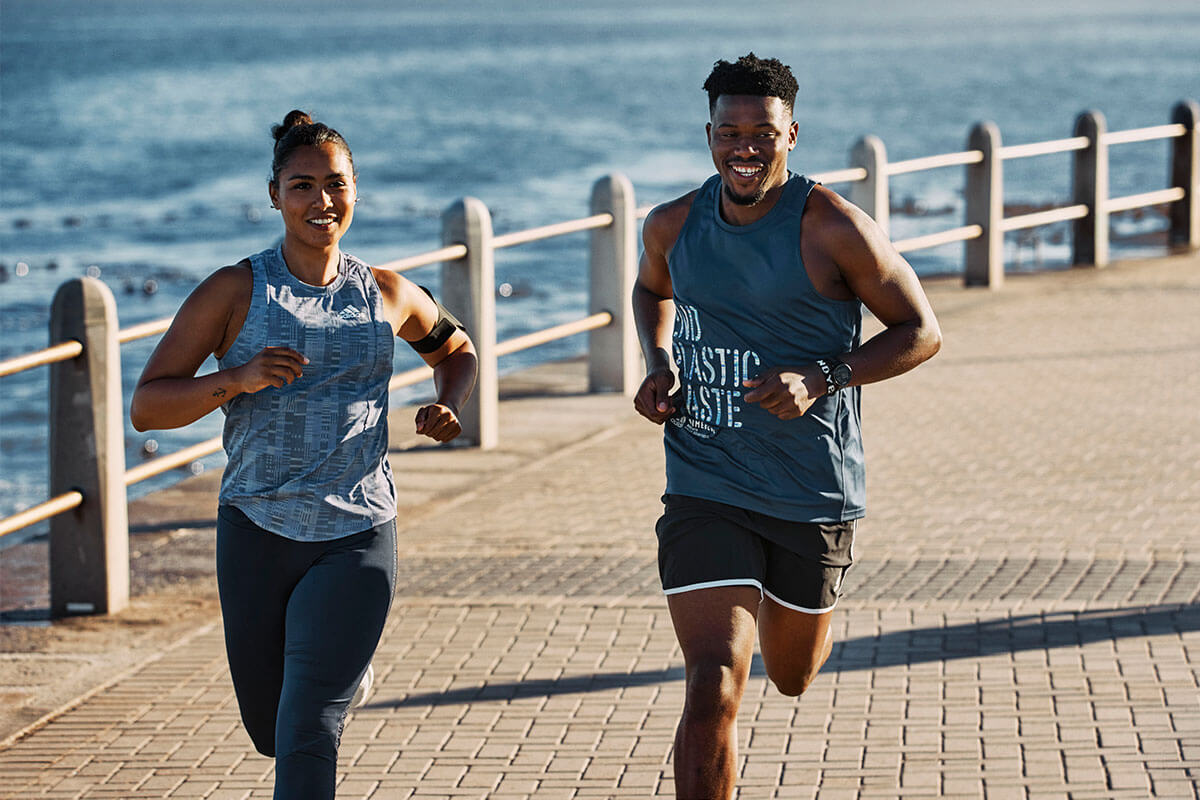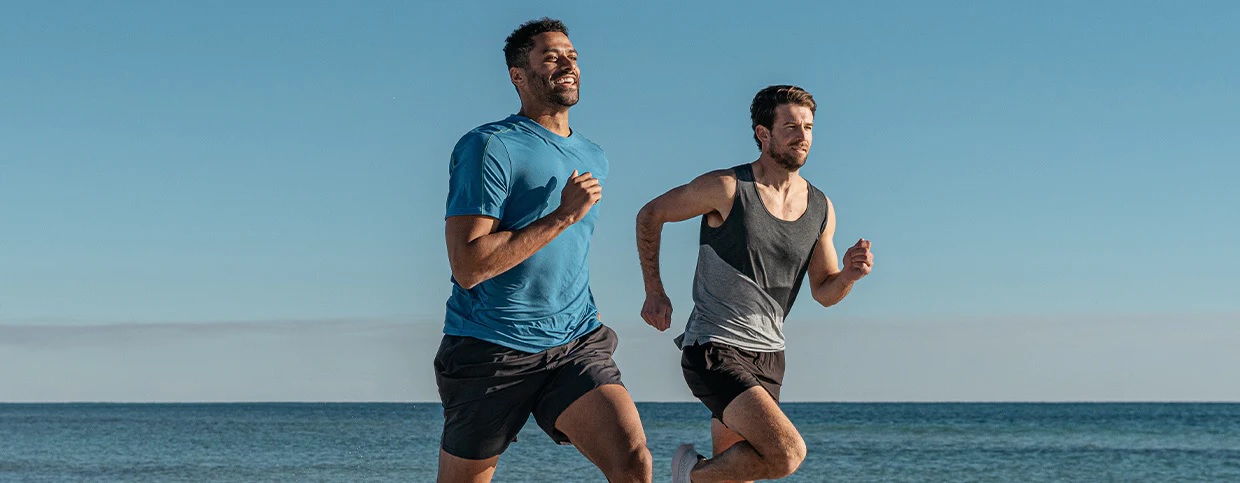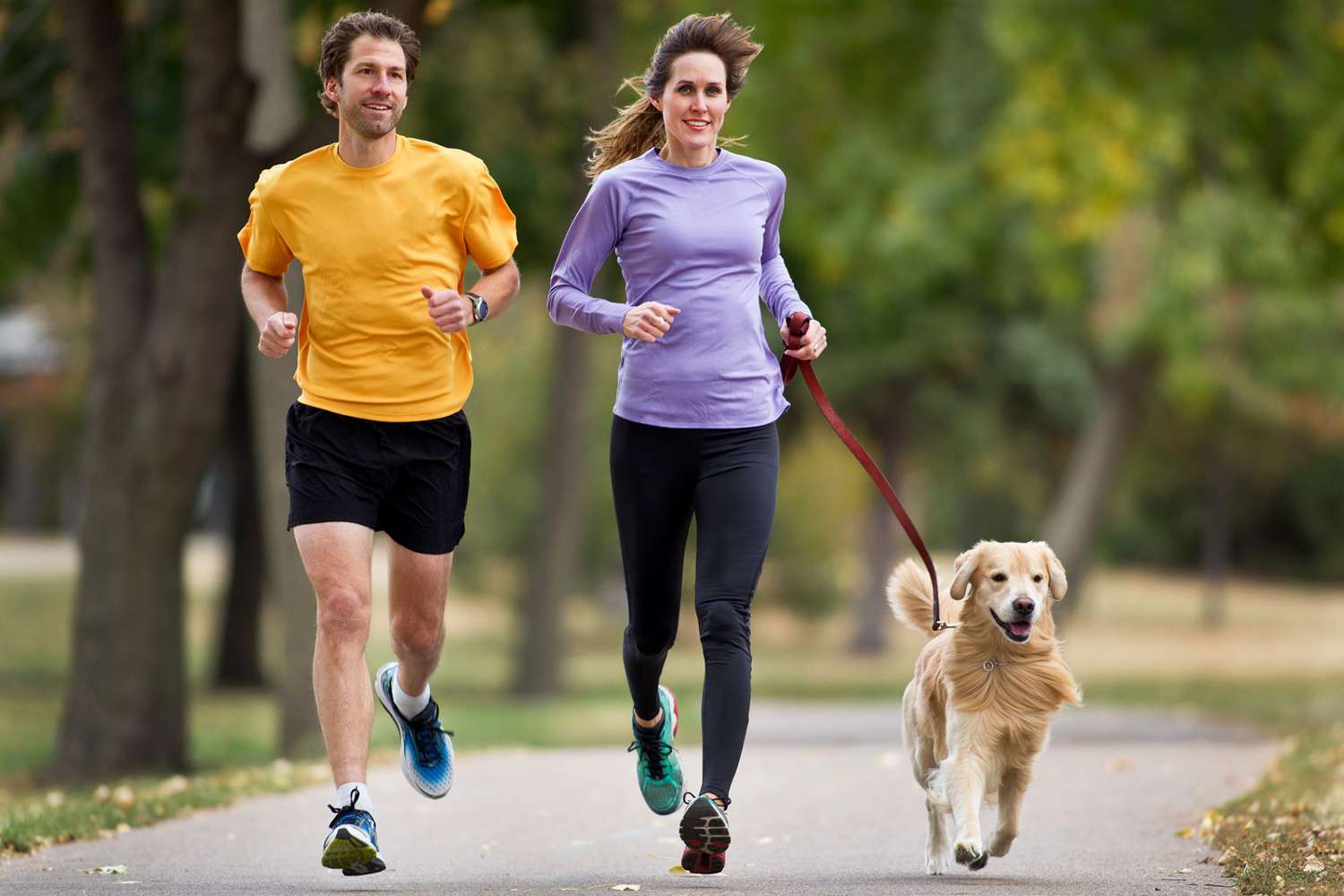

Featured
When Can I Start Jogging With My Puppy
Modified: January 2, 2024
Start jogging with your puppy at an appropriate age with our featured guide. Get expert advice on when and how to begin this healthy activity together.
Introduction
Welcome to the world of puppy ownership! As you watch your furry friend grow and develop, you may start thinking about ways to keep them active and healthy. One popular activity that many dog owners enjoy is jogging with their puppies. Not only is jogging a great way for you to stay fit, but it can also provide numerous benefits for your puppy. However, it’s important to remember that puppies have different exercise needs and limitations compared to adult dogs. Before you strap on your running shoes and hit the pavement with your canine companion, there are a few things to consider.
In this article, we will explore the benefits of jogging with your puppy, how to assess their readiness for this exercise, tips for a successful jogging routine, training techniques, gear selection, precautions, and how to gradually increase distance and intensity. By understanding the ins and outs of running with your puppy, you can create a safe and enjoyable experience for both of you.
Jogging with your puppy not only helps to build a strong bond between you, but it also provides mental and physical stimulation, improves cardiovascular health, and aids in maintaining a healthy weight. Regular exercise is crucial for puppies, as it helps to burn off excess energy and prevents behavioral problems that can arise from boredom and pent-up energy.
However, it’s important to remember that not all puppies are ready for jogging right away. Just like humans, puppies undergo physical and developmental changes at their own pace. It’s crucial to assess your puppy’s readiness for jogging before embarking on any strenuous exercise routine. This involves taking their age, breed, and overall health into consideration.
Once you’ve determined that your puppy is ready for jogging, there are several tips you can follow to ensure a successful experience. These include proper training techniques, gear selection, precautions, and gradually increasing the distance and intensity of your runs. By following these guidelines, you can create a routine that is both enjoyable and safe for your puppy.
Benefits of Jogging With Your Puppy
Jogging with your puppy can be a rewarding and beneficial activity for both you and your furry companion. Let’s take a look at some of the key benefits:
- Physical Exercise: Jogging is a fantastic way to provide your puppy with the necessary physical exercise they need to stay healthy and fit. Regular exercise helps to strengthen their muscles, improve their cardiovascular health, and maintain a healthy weight. It also helps to keep their joints limber and reduces the risk of obesity-related health issues.
- Mental Stimulation: Just like humans, puppies need mental stimulation to stay happy and engaged. Jogging allows your puppy to explore new surroundings, encounter different sights and smells, and provides them with sensory stimuli. This mental stimulation can help to prevent boredom and reduce destructive behaviors that may arise from a lack of mental activity.
- Bonding: Jogging with your puppy can strengthen the bond between you and your furry friend. The shared activity promotes trust, companionship, and a deeper connection. It’s an opportunity for quality one-on-one time, where you can both enjoy each other’s company while getting some exercise.
- Socialization: Taking your puppy on jogs exposes them to various social situations and helps them become comfortable around other people, dogs, and different environments. It’s an excellent opportunity to practice good leash manners, proper greetings, and reinforce positive behavior when encountering other joggers or fellow dog owners.
- Behavioral Benefits: Regular exercise, such as jogging, can help channel your puppy’s energy and prevent behavioral problems that arise from pent-up energy and boredom. It can reduce excessive barking, chewing, digging, and other destructive behaviors commonly seen in underexercised puppies.
Keep in mind that the benefits of jogging with your puppy extend beyond just physical and mental well-being. It’s an activity that promotes a healthy and fulfilling lifestyle for both of you. However, it’s essential to assess your puppy’s readiness for jogging and take necessary precautions to ensure their safety and comfort.
Assessing Your Puppy’s Readiness for Jogging
Before you hit the pavement with your puppy, it’s important to assess their readiness for jogging. Puppies, just like humans, have different physical capabilities and limitations based on their age, breed, and overall health. Here are a few factors to consider:
- Age: Puppies’ bones, joints, and muscles are still developing, so it’s important not to overstress them with vigorous exercise too early on. Most veterinarians recommend waiting until your puppy is at least six months old before starting a jogging routine.
- Breed: Different breeds have varying exercise needs and tolerances. Some breeds are better suited for long-distance jogging, while others may have physical limitations due to their body structure or respiratory issues. Consult with your veterinarian to determine if jogging is appropriate for your puppy’s breed.
- Health: It’s crucial to ensure that your puppy is in good overall health before engaging in any strenuous exercise. Take your puppy for a thorough check-up with a veterinarian to ensure they’re free from any underlying medical conditions that may be aggravated by jogging. This is especially important for puppies with a history of hip dysplasia, heart problems, or respiratory issues.
- Energy Level: Consider your puppy’s energy level and temperament. Some puppies may have an abundance of energy and need more exercise, while others may be more laid-back and require less intense workouts. Tailor your jogging routine based on your puppy’s energy levels and preferences.
Assessing your puppy’s readiness for jogging is crucial to prevent potential injuries and ensure their well-being. If you have any doubts or concerns, it’s always best to consult with a veterinarian who can provide specific guidance based on your puppy’s individual needs.
Tips for a Successful Jogging Routine with Your Puppy
Now that you’ve determined that your puppy is ready for jogging, it’s time to establish a successful routine. Here are some key tips to keep in mind:
- Start Slowly: Just like humans, puppies need to gradually build up their stamina and endurance. Start with short, gentle jogs and gradually increase the distance and intensity over time. This allows your puppy’s muscles and joints to adapt to the exercise and reduces the risk of injury.
- Warm Up and Cool Down: Prior to starting your jog, spend a few minutes warming up your puppy’s muscles with a brisk walk. Similarly, end your jog with a cooldown period to prevent muscle soreness. This helps to prepare your puppy’s body for exercise and aids in recovery.
- Select Suitable Surfaces: Opt for running surfaces that are safe and comfortable for your puppy. Avoid rough pavement or hot asphalt, as it can damage your puppy’s paw pads. Look for grassy trails or soft surfaces that provide cushioning and reduce impact on their joints.
- Stay Hydrated: Make sure to bring water for both you and your puppy during your jog. Puppies can become dehydrated quickly, especially during hot weather. Offer small sips of water periodically throughout the run to keep them properly hydrated.
- Pay Attention to Body Language: Watch for signs of fatigue, overheating, or discomfort during your jog. If your puppy starts lagging behind, panting excessively, or showing signs of distress, it’s important to stop and give them a break. Listen to your puppy’s cues and adjust the intensity and duration of your runs accordingly.
- Use Positive Reinforcement: Encourage and reward your puppy during and after the run to create positive associations with jogging. This can be done by offering treats, verbal praise, or a favorite toy. This positive reinforcement helps to motivate your puppy and reinforces good behavior during the run.
- Vary Your Routes: Keep your puppy mentally stimulated by exploring different jogging routes. This not only exposes them to new sights and smells but also helps prevent boredom from repetitive surroundings. Just make sure to choose safe and familiar routes to avoid any potential hazards.
By following these tips, you can establish a successful and enjoyable jogging routine with your puppy. Always prioritize their well-being, listen to their needs, and ensure that their safety and comfort are your top priorities during your runs.
Training Your Puppy to Run Safely
Training your puppy to run safely is essential to ensure a positive and injury-free jogging experience. Here are some training tips to keep in mind:
- Leash Training: Before hitting the road, ensure that your puppy is leash trained and understands basic commands such as “heel” and “stop.” This will help maintain control and prevent them from pulling or running off during the jog.
- Start with Short Distances: Begin by taking your puppy on short walks or gentle jogs to acclimate them to running alongside you. Gradually increase the distance as your puppy becomes more comfortable and confident.
- Focus on Leash Manners: Reinforce good leash manners during your runs. Encourage your puppy to walk or jog alongside you without pulling. Reward them with treats or praise for walking calmly and maintaining a loose leash.
- Avoid Overexertion: Be aware of your puppy’s energy levels and avoid pushing them too hard. Puppies have bursts of energy but can tire quickly. Start with shorter runs and gradually increase the duration and intensity based on their comfort and stamina.
- Reward-Based Training: Use positive reinforcement techniques to encourage desirable behavior. Reward your puppy with treats, verbal praise, or toys when they demonstrate good behavior during the run. This positive reinforcement helps to reinforce their good running habits.
- Observe Proper Form: Pay attention to your puppy’s form while running. Make sure their spine is aligned, and they are running with smooth, fluid movements. Avoid running on hard surfaces or uneven terrain that may put strain on their developing joints.
- Vary the Pace: Mix up the pace of your runs to challenge your puppy and keep them engaged. Incorporate intervals of slow jogging, brisk walking, and short sprints to provide a well-rounded workout and prevent boredom.
- Monitor Their Breathing: Keep an eye on your puppy’s breathing during the run. Puppies can easily overheat, so watch for excessive panting or difficulty breathing. If you notice these signs, slow down or take a rest break to allow them to cool down and catch their breath.
Remember that every puppy is unique, and their training needs may vary. It’s important to be patient, consistent, and attentive to your puppy’s cues. By training your puppy to run safely, you can ensure a lifetime of enjoyable jogs together.
Choosing the Right Gear for Jogging with Your Puppy
When it comes to jogging with your puppy, having the right gear is crucial for their safety, comfort, and overall enjoyment. Here are some key items to consider:
- Collar or Harness: Choose a well-fitting collar or harness that provides proper support and control during the run. Avoid using retractable leashes, as they can make it difficult to maintain control of your puppy.
- Leash: Opt for a sturdy, lightweight leash that allows you to maintain control while giving your puppy enough freedom to run comfortably. Look for a leash with reflective features for added visibility during early morning or evening jogs.
- Proper Footwear: Invest in a good pair of running shoes for yourself to provide support and cushioning for your joints. Protect your puppy’s paws by considering rugged, non-slip booties or paw wax to shield their paw pads from hot pavement or rough surfaces.
- Reflective Gear: For increased visibility, especially during low-light conditions, consider attaching reflective accessories to your puppy’s collar, harness, or leash. This makes it easier for others to spot you and your furry companion while on the road.
- Water Bottle and Portable Bowl: It’s important to keep your puppy hydrated during jogs. Carry a water bottle and a collapsible, portable bowl to offer them water breaks along the way. This will help prevent dehydration, especially on hot days.
- Treats and Poop Bags: Always bring along training treats to reward your puppy for good behavior during the run. Additionally, carry poop bags to clean up after your dog and be a responsible pet owner wherever you go.
- Appropriate Clothing: Dress in lightweight, breathable clothing suitable for the weather conditions. Consider wearing reflective gear as well to enhance your visibility, especially during early morning or evening runs.
- Identification: Make sure your puppy wears an up-to-date identification tag with your contact information. In case your puppy gets separated from you during the jog, this will help ensure a swift reunion.
Choosing the right gear for jogging with your puppy not only keeps them safe but also enhances their overall comfort and enjoyment of the activity. Remember to regularly inspect and replace worn-out or damaged gear to ensure optimal performance. With the right gear in hand, you and your puppy can hit the road with confidence and peace of mind.
Precautions and Safety Measures to Consider
Ensuring the safety of both you and your puppy during your jogging sessions is of utmost importance. Here are some precautions and safety measures to consider:
- Veterinary Check-up: Before starting any exercise routine, schedule a visit to your veterinarian. They can assess your puppy’s overall health, provide recommendations, and ensure they are up to date on vaccinations.
- Watch the Weather: Be mindful of the weather conditions before heading out for a jog. Extreme heat, cold temperatures, or high humidity can pose risks to your puppy’s health. Opt for cooler times of the day and adjust the intensity and duration of your runs accordingly.
- Stay in Safe Areas: Jog in well-lit areas with minimal traffic to reduce the risk of accidents or encounters with aggressive dogs. Stick to designated paths or trails that are safe for jogging and away from potential hazards.
- Stay Hydrated: Hydration is crucial for both you and your puppy. Bring along water for both of you and offer your puppy water breaks during the jog. Keep an eye on signs of dehydration, such as excessive panting or lethargy, and take breaks as needed.
- Observe Rest Days: Just as humans need rest days to recover, your puppy will also benefit from them. Give your puppy regular rest days to allow their muscles and joints to recover and prevent overexertion.
- Avoid Traffic: Exercise caution when jogging near roads or in urban areas. Stay vigilant and keep your puppy on a short leash to prevent them from darting into traffic. Utilize reflective gear to enhance visibility during early morning or evening jogs.
- Be Mindful of Other Animals: Keep a safe distance from other animals, particularly wildlife or stray dogs, to avoid any potential confrontations or exposure to diseases. It’s important to maintain control of your puppy and be respectful of others while jogging.
- Monitor Body Language: Pay attention to your puppy’s body language during the run. If they exhibit signs of exhaustion, pain, or discomfort, stop and give them a break. Never push your puppy beyond their physical capabilities.
- Be Prepared for Emergencies: Always carry a fully charged phone with emergency numbers programmed in it. Familiarize yourself with nearby veterinary clinics or animal hospitals in case of any injuries or emergencies that may occur during your jog.
Prioritizing precautions and safety measures during your jogging sessions will help ensure the health, well-being, and enjoyment of both you and your puppy. By taking these steps, you can create a safe and enjoyable running experience for everyone involved.
Gradually Increasing Distance and Intensity
When it comes to jogging with your puppy, it’s essential to gradually increase both the distance and intensity of your runs. This allows your puppy’s muscles, stamina, and endurance to develop over time. Here are some key tips to keep in mind when increasing distance and intensity:
- Start Slow: Begin with short jogging sessions to allow your puppy to become accustomed to the activity. Start with a distance that is easily manageable for your puppy and gradually increase it as they become more comfortable and build up their endurance.
- Listen to Your Puppy: Pay attention to your puppy’s cues during the run. Watch for signs of fatigue, such as lagging behind, excessive panting, or slowing down. If you notice any of these signs, it’s important to slow down or take a break to allow your puppy to rest and recover.
- Alternate with Walks: Mix in shorter walks between your jogging sessions. This helps to provide a break for your puppy and allows them to recover from more intense runs. It’s also a great way to continue exercising while reducing the overall impact on their developing joints.
- Implement Intervals: Incorporate intervals of running and walking during your jogs. This helps to gradually increase intensity while still providing rest periods for your puppy. Start with shorter running intervals and gradually increase the duration of each running phase over time.
- Monitor Recovery Time: After each run, observe how long it takes for your puppy to recover. If they seem fatigued for an extended period or it takes longer for them to regain their energy, it may be an indication that you need to reduce the distance or intensity of your runs.
- Build Up Distance Slowly: Slowly increase the distance of your runs by no more than 10% each week. For example, if your puppy is comfortable jogging one mile, gradually increase it to 1.1 miles the following week. This progressive approach minimizes the risk of overexertion and allows your puppy to adapt gradually.
- Consider Your Puppy’s Age: Remember that puppies have developing bones and joints, so it’s crucial not to overexert them with long-distance running too quickly. Consult with your veterinarian to determine the appropriate distance and intensity for your puppy based on their age and breed.
By gradually increasing the distance and intensity of your runs, you can help your puppy build up their endurance, stamina, and overall fitness level over time. Remember to always prioritize your puppy’s well-being and listen to their cues to prevent any injuries or overexertion.
Signs to Watch for During and After Jogging
While jogging with your puppy can be a rewarding experience, it’s important to be watchful for any signs of discomfort, fatigue, or potential issues that may arise during or after the run. Here are some key signs to keep an eye out for:
- Excessive Panting: Some panting is normal during exercise, but excessive and prolonged panting may be a sign of overheating or overexertion. If your puppy is panting heavily and having difficulty catching their breath, it’s important to stop and allow them to rest and cool down.
- Lagging Behind: If your puppy starts to lag behind or show signs of slowing down significantly during the run, it may indicate fatigue or discomfort. Respect their limits and consider taking a break or reducing the intensity of the workout.
- Limping or Lameness: Notice if your puppy starts favoring a particular leg, limping, or displaying signs of lameness during or after the run. This can be a sign of an injury or strain and should be addressed promptly by a veterinarian if it persists or worsens.
- Excessive Thirst: While your puppy will naturally be thirsty after a run, if they show extreme and prolonged thirst that is not quenched by providing water, it could be a sign of dehydration. Make sure to offer water and monitor their drinking habits to ensure they are properly hydrated.
- Lethargy or Disinterest: Keep an eye out for unusual changes in behavior or energy levels. If your puppy appears unusually lethargic, uninterested in activities, or reluctant to move around after a jog, it may indicate exhaustion or discomfort.
- Difficulty Breathing: Heavy or labored breathing, wheezing, or coughing should not be ignored. These signs may indicate respiratory distress, which could be caused by overexertion or an underlying health issue. Seek veterinary attention if these symptoms persist.
- Stiffness or Soreness: After a run, it’s normal for your puppy to experience some muscle soreness or stiffness, similar to what humans may experience. However, if you notice ongoing or severe stiffness, pain, or difficulty walking, it could be an indication of an injury or strain that requires veterinary attention.
- Changes in Eating or Drinking Habits: Be mindful of any changes in your puppy’s eating or drinking habits after jogging. A noticeable decrease in appetite or thirst may indicate physical discomfort or stress and should be monitored closely.
It’s important to remember that each puppy is unique, and their reactions to exercise will vary. By being attentive and recognizing any signs of distress or discomfort, you can ensure the safety and well-being of your puppy during and after your jogging sessions. If you notice any concerning signs or have any doubts, consulting with a veterinarian is always recommended.
Conclusion
Jogging with your puppy can be a fantastic way to bond, stay active, and promote overall health and well-being for both of you. By following the guidelines and tips outlined in this article, you can ensure a safe and enjoyable experience while jogging with your furry companion.
Assessing your puppy’s readiness for jogging, starting slowly, and gradually increasing distance and intensity are crucial steps to prevent injuries and allow your puppy to build up their endurance. Paying attention to your puppy’s body language, monitoring their hydration, and being aware of potential hazards are important precautions to take during your runs.
Choosing the right gear, properly training your puppy to run safely, and watching for signs of discomfort or fatigue are additional key factors in creating a successful jogging routine. By incorporating positive reinforcement, varying your routes, and understanding your puppy’s energy levels, you can make each jog an enjoyable experience for both of you.
Remember to listen to your puppy, respect their limits, and always prioritize their well-being. Consulting with a veterinarian for personalized guidance and care is essential to ensure your puppy’s health and safety during your jogging sessions.
So, lace up your running shoes, grab the leash, and hit the pavement with your puppy by your side. Together, you can embrace the joys of jogging and create cherished memories while promoting a healthy and active lifestyle for both you and your furry friend.

